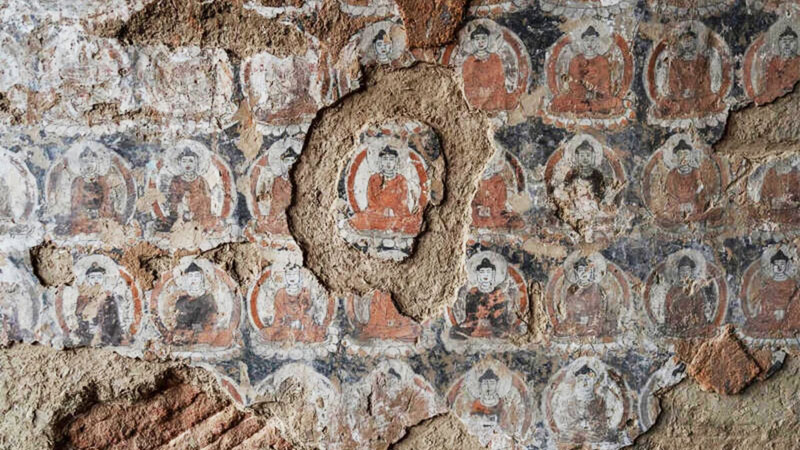|
New research from environmental group Greenpeace has found that extreme weather conditions, caused by climate change, are already a significant threat to ancient heritage sites in China

Lauren Heath-Jones | Planet Attractions | 27 Jul 2023

 Heavy rainfall and rising humidity levels have caused damage to several Unesco-listed cave monasteries in China, including the famous Mogao Caves in Dunhuang Credit: Greenpeace Heavy rainfall and rising humidity levels have caused damage to several Unesco-listed cave monasteries in China, including the famous Mogao Caves in Dunhuang Credit: Greenpeace
New research by environmental group Greenpeace has found that extreme weather conditions, caused by climate change, are posing a significant threat to ancient cultural heritage in China.
Extreme rainfall in the country’s Gansu province has caused damage to several Unesco-listed cave monasteries, including the famous Mogao Caves in Dunhuang.
Also known as the Thousand Buddha Grottos, the caves are located in the Gobi desert at the end of the Great Wall of China. Dating back to the 4th century, the caves contain some of the finest examples of Buddhist artworks, including murals and sculptures.
The works, which span a 1,000-year period, depict all aspects of medieval life including politics, culture, religion, and, crucially, provide an insight into Silk Road, a network of Eurasian trade routes that were active until the mid-15th century.
Unesco has described the works as having “unmatched historical value”, however, adverse weather conditions, such as leaking from excessive rainfall, have severely damaged the ancient artworks, even causing some of the caves to collapse.
According to the report, flooding is not the only threat to the artworks, with the region’s now frequent and torrential rain storms pushing humidity levels in the caves beyond safe preservation levels.
This has led to salt crystallising on the cave walls, causing the paint to become dislodged, with the report saying that the murals are now flaking away at an accelerated rate.
“Gansu is famous for its caves and the art stored inside them for centuries,” said Li Zhao, a Beijing-based researcher at Greenpeace East Asia.
“Increased bouts of rainfall in the desert pose an acute risk. Spikes in humidity, flash floods and cave-ins are already happening.”
Heritage
|
|






Supplier Showcase 2025: The biggest attractions projects landing worldwide this year
|